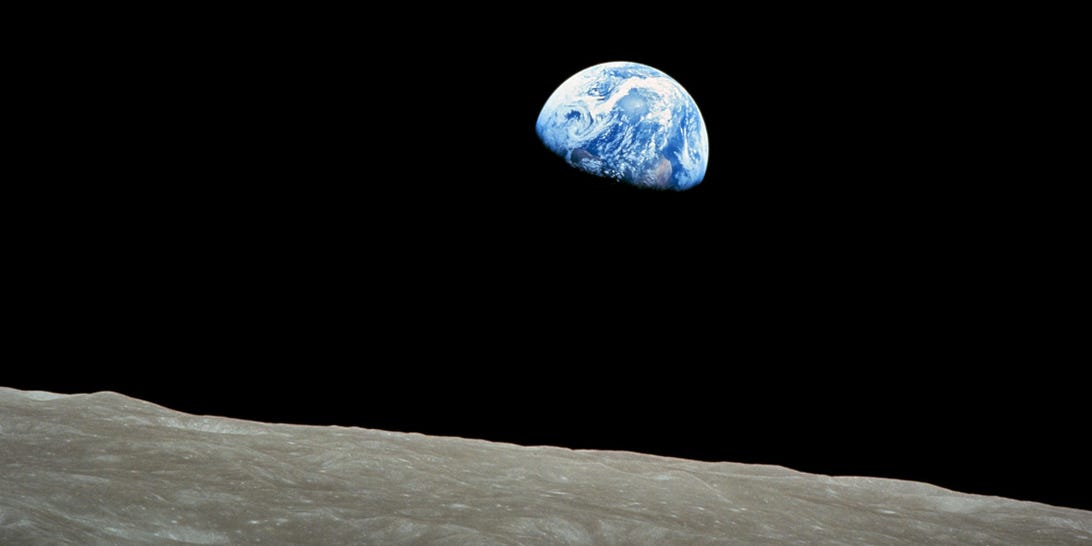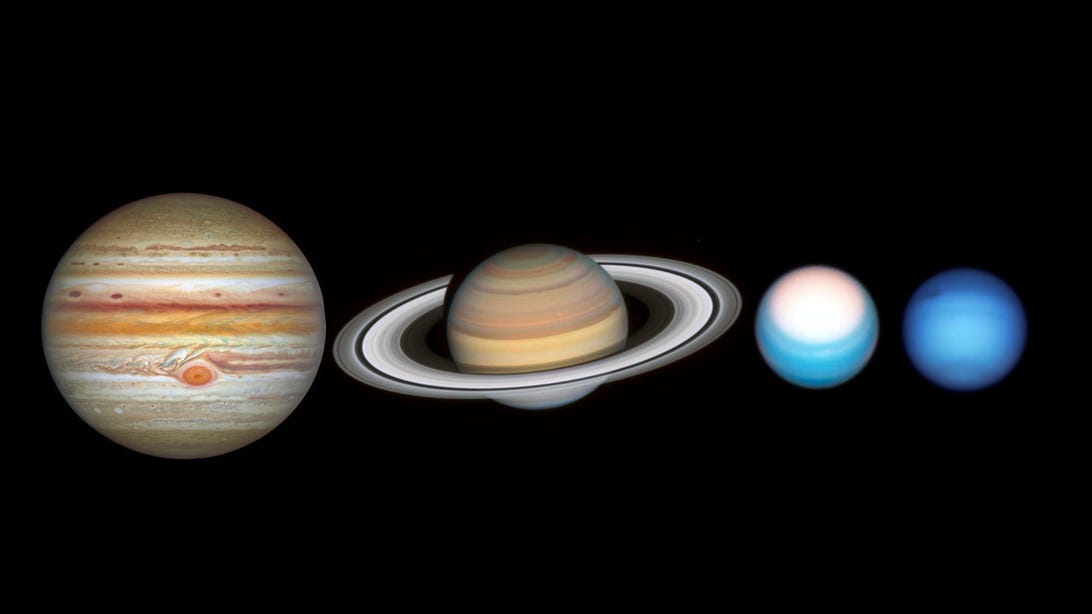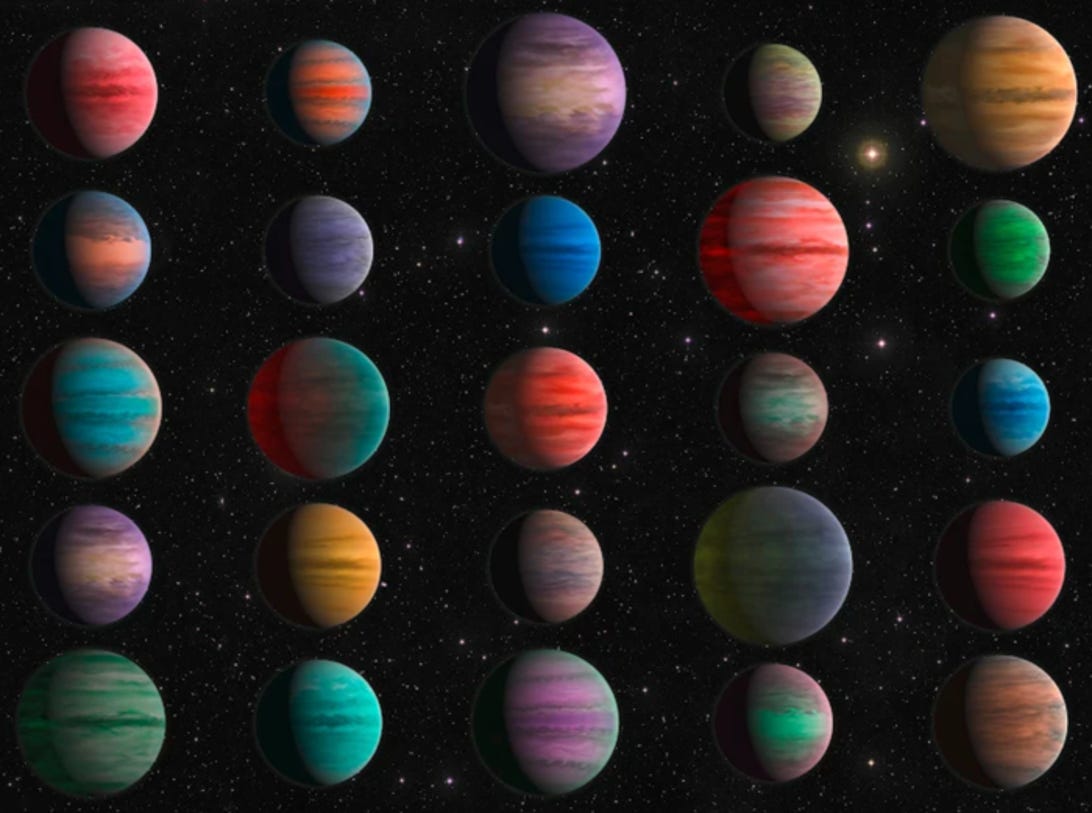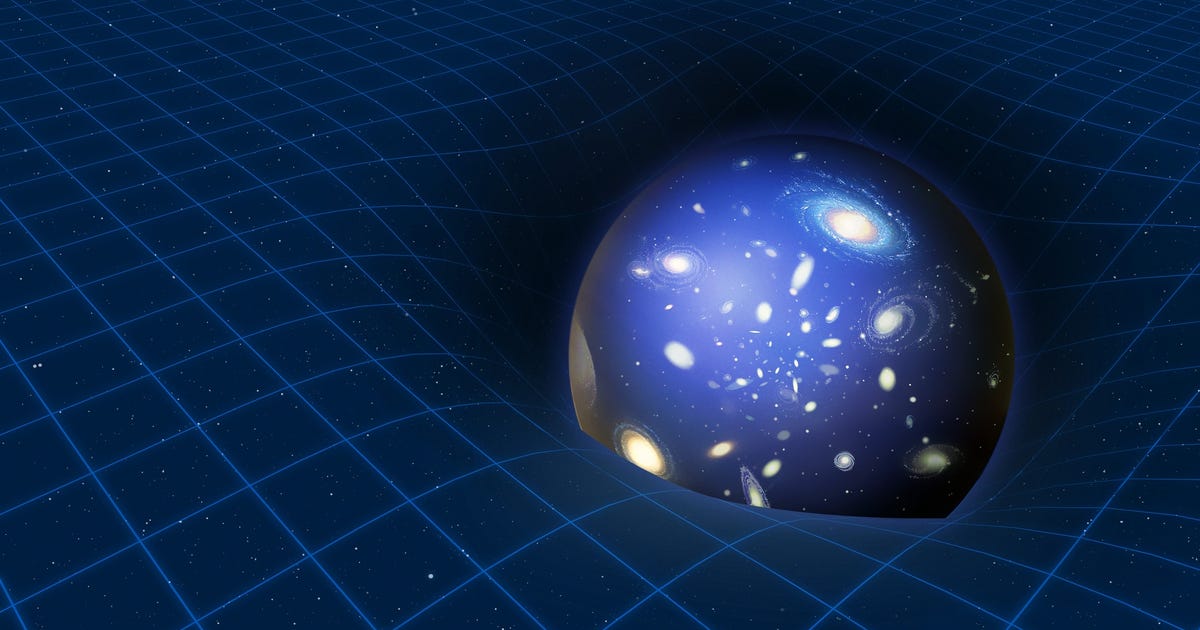How Einstein’s Theory of General Relativity Could Help Vividly Image Alien Worlds
Christmas Eve, 1968 — Apollo 8 astronaut Bill Anders took a picture that would soon reframe humanity’s view of the universe. It was an image of Earth, but from the moon’s vantage point.
When you look at this picture, a crisp planet stares back at you, levitating just above the lunar horizon like a turquoise sunrise. And this very resemblance earned Anders’ photograph the perfect name: “Earthrise.”

Earthrise, taken during the first crewed voyage around the moon, Apollo 8.
Bill Anders/NASA
Since the time Anders took his shot from a moon-orbiting spacecraft, scientists have procured absolutely mind-blowing pictures of Saturn’s rocky rings, Neptune’s azure hues and even Jupiter’s orange marbled stripes — but these photos barely scratch the surface of our universe’s planetary society.
There are thousands more alien worlds floating beyond our solar system, but they remain hidden to the human eye because they’re light-years on light-years away from us. Our telescopes are too far away to capture their beauty. They show up only as blurry dots of light — if they show up at all.
Soon, however, these fuzzy exoplanets might come into focus. On Tuesday in The Astrophysical Journal, a team of Stanford researchers outlined a futuristic telescope concept that could theoretically take photographs of foreign orbs with enough clarity to rival even Anders’ iconic Earthrise.
It’s called the “gravity telescope.”

The planets aren’t to scale in this image. It shows Hubble’s 2021 portraits of the outer planets, with Jupiter, Saturn, Uranus and Neptune running from left to right.
NASA, ESA, A. Simon (Goddard Space Flight Center), and M.H. Wong (University of California, Berkeley) and the OPAL team
“With this technology, we hope to take a picture of a planet 100 light-years away that has the same impact as Apollo 8’s picture of Earth,” study co-author Bruce Macintosh, said in a statement. Macintosh is a physics professor at Stanford University and deputy director of the Kavli Institute for Particle Astrophysics and Cosmology.
The telescope would work, the researchers say, by harnessing a mind-bending phenomenon called gravitational lensing.
Gravitational lensing? What’s that?
In a nutshell, gravitational lensing refers to the fact that light emanating from stars or other spacey objects gets warped and distorted while passing by a supermassive, gravitationally dense cosmic body.
The reason this happens is because of general relativity, a well-established theory of gravity first proposed by Albert Einstein in the early 1900s. We won’t delve too deeply into general relativity because, well, that would require quite a bit of brain-burning physics, which I’ll save for another time.
For gravitational lensing, you just need to know that general relativity suggests space and time are interconnected like a giant piece of moldable fabric. This fabric can bend and twist like your clothing, and basically does so when there’s an object in it.
Galaxy clusters warp it like none other, black holes warp it a lot, Earth warps it somewhat, the moon warps it a little, and even you warp it a teeny tiny bit. Everything warps it, but the bigger the object, the more warping you get.

In this photo, gravitational lensing is distorting the light coming from galaxies. That’s why they look sort of like smudges or streaks.
NASA/ESA/K. Sharon/E. Ofek
And importantly for gravitational lensing, when light passes through one of these warps, a sort of magnifying glass effect is created. Normally, astronomers use this effect around the most warped areas — usually galaxy clusters — to kind of “magnify” far away objects. Gravitational lensing gives them a much better picture of whatever it is they’re looking at.
The gravity telescope concept works with the same idea, but with a few tweaks.
Gravity telescope specs
The first difference is that the researchers suggest using our very own sun as the gravity telescope’s warp-source, instead of the usual galaxy cluster. And second, the gravity telescope requires an extra step that’s kind of like Sherlock Holmes-style deduction.
According to the paper, the device would first capture the sun-warped exoplanet’s light (standard gravitational lensing stuff) but then, the telescope’s so-called solar gravitational lens will use that light data to work backward and reconstruct what the exoplanet actually looked like in the first place.
Ta-da.
To demonstrate how this would work, the researchers used existing Earth images taken by the satellite Dscovr. This spacecraft sits between our planet and the sun, so it’s pretty perfect for a theoretical gravity telescope test.
The team ran images of our planet through a computer model to see what Earth would look like through the sun’s gravitational lensing effects. Then, they developed and used an algorithm to “unbend” the light, or unwarp the light, and begin the reconstruction process.
In short, it worked.
An example of a reconstruction of Earth, using the ring of light around the sun, projected by the solar gravitational lens. The algorithm that enables this reconstruction can be applied to exoplanets for superior imaging.
Alexander Madurowicz
“By unbending the light bent by the sun, an image can be created far beyond that of an ordinary telescope,” Alexander Madurowicz, a doctoral student at the Kavli Institute for Particle Astrophysics and Cosmology and co-author of the study, said in a statement. “This will allow investigation of the detailed dynamics of the planet atmospheres, as well as the distributions of clouds and surface features, which we have no way to investigate now.”
He added, “the scientific potential is an untapped mystery because it’s opening this new observing capability that doesn’t yet exist.”
Without using the team’s gravitational lens, we’d need a telescope that’s something like 20 times wider than Earth to take a super clear picture of an exoplanet – but with the gravitational lens, the team says, a Hubble-size telescope will do.
There’s a massive caveat
For any of this to work, the gravity telescope needs to be at least 14 times farther away from the sun than Pluto. Yeah.
And that, the authors of the study write, “would require extreme patience with conventional and existing rocket technology,” with travel times of about 100 years “or advancements in propulsion to achieve greater departure velocity, such as a solar sail.”
In other words, it’d take around a century to get the gravity telescope to where we’d need it to be. Solar sails, like this one, could potentially reduce the travel time to something like 20 or 40 years, but solar sails are pretty far away from regular use.
Nevertheless, the researchers say they’re driven by the grander consequences of taking spectacular exoplanet pictures one day. For instance, it could greatly benefit the quest to find proof of extraterrestrial life.

Artist’s conceptual image of 25 exoplanets lurking beyond our solar system. With the gravity telescope, maybe we can capture actual photos of them.
ESA/Hubble, N. Bartmann
“This is one of the last steps in discovering whether there’s life on other planets,” Macintosh said. “By taking a picture of another planet, you could look at it and possibly see green swatches that are forests and blue blotches that are oceans – with that, it would be hard to argue that it doesn’t have life.”
And, as for my fellow amateur planetary admirers, I think viewing a photograph of an exoplanet would adjust our existential perspective — the way Earthrise did for humanity once upon a time.
Even now, looking at Earthrise undoubtedly spurs in us a weird feeling; a sense of disbelief that we’re traveling through the cosmos on what’s basically a gigantic, round ship.
What will we feel when we catch a glimpse of all the other gigantic, round ships in the universe?
For all the latest world News Click Here

